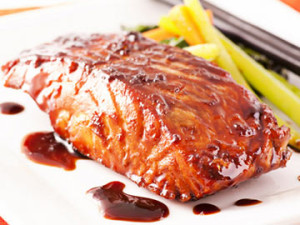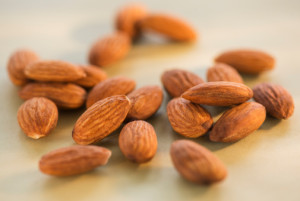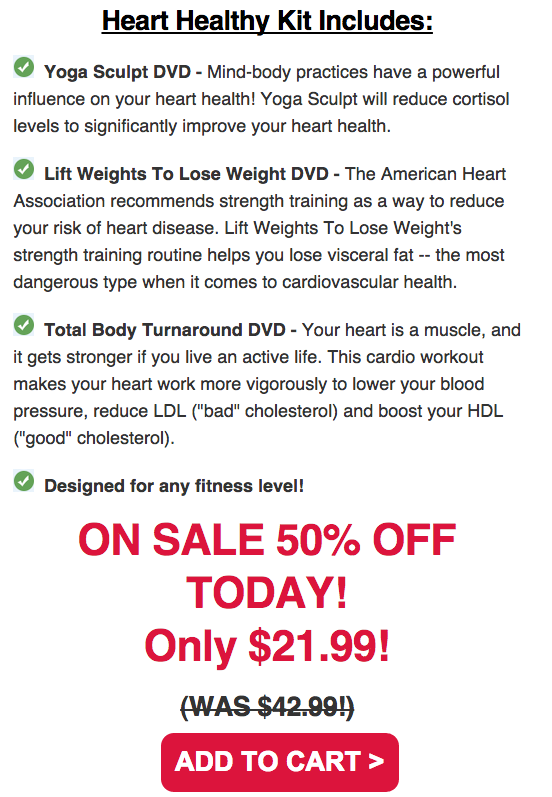6 Simple Steps To A Healthier Heart

February is American Heart Month…a personal subject for me. When I was 17, my dad died of a sudden heart attack. Needless to say, it was devastating, and one of the few effective coping mechanisms that I found for the pain and confusion I experienced was running. It was therapeutic for me; after my runs, I’d feel like some of the weight on my shoulders had lifted.
Over time, the fog began to clear and life began to feel more manageable. And my love of fitness and its powerful effect on our lives was born. But there was another important consequence that resulted from losing my dad. I became acutely aware of the importance of heart health, and the active role we can play in protecting it.
The numbers are tough to digest: 42 million women in the U.S. are currently living with or at risk for heart disease; 1 woman dies every minute from cardiovascular disease; and 64% of those women had no previous symptoms. But all women face the threat of heart disease.
Did you know that women’s heart attack signs may be different from men’s? In fact, many female heart attack survivors report absolutely no chest pain.
Some of the warning signs include:
- Jaw pain
- Abdominal pain
- Pain in one or both arms
- Cold sweat
- Sense of foreboding
- Shortness of breath
- Chest discomfort
But here’s the good news: cardiovascular diseases can usually be prevented and even reversed.
The greatest advice in our education is that heart disease can be virtually eliminated by controlling three factors:
- Cholesterol
- Smoking
- Blood pressure
In other words, what we put into our bodies and how we move them are the greatest weapons in our battle against this #1 killer of women.
Your lifestyle (not your genes – your lifestyle) is the #1 factor in determining whether or not you’ll have a heart attack. The American Heart Association states that 90% of us fail to consistently eat a heart-healthy diet.
Here are 6 simple steps to a healthier heart:
1. Know your fats!
 For omega-3 fatty acids, eat salmon, sardines packed in water or olive oil, herring, and black cod (sablefish, butterfish); omega-3 fortified eggs; hemp seeds and flaxseeds (preferably freshly ground); or take a fish oil supplement (look for products that provide both EPA and DHA, in a convenient daily dosage of two to three grams). While cooking, use extra-virgin olive oil. Strictly avoid all products made with partially hydrogenated oils of any kind.
For omega-3 fatty acids, eat salmon, sardines packed in water or olive oil, herring, and black cod (sablefish, butterfish); omega-3 fortified eggs; hemp seeds and flaxseeds (preferably freshly ground); or take a fish oil supplement (look for products that provide both EPA and DHA, in a convenient daily dosage of two to three grams). While cooking, use extra-virgin olive oil. Strictly avoid all products made with partially hydrogenated oils of any kind.
Click here for a heart-healthy Asian-Glazed Salmon Recipe
2. Decrease consumption of animal protein.
On a 2,000-calorie-a-day diet, your daily intake of protein should be between 80 and 120 grams. Eat less protein if you have liver or kidney problems. Making vegetarian meals one or two days a week could make things interesting at the dinner table. Beans, soy and legumes can make for surprisingly delicious meat substitutes.
3. Get Nutty!
 Walnuts, almonds and other nuts are rich in polyunsaturated fatty acids, which help keep blood vessels healthy. (Of course, nuts are also high in calories, so remember, a little bit goes a long way.)
Walnuts, almonds and other nuts are rich in polyunsaturated fatty acids, which help keep blood vessels healthy. (Of course, nuts are also high in calories, so remember, a little bit goes a long way.)
4. Stock Up On Heart-Healthy Fiber
Heart-healthy fiber is available in every type of plant. Fiber helps flush carcinogens, toxins, excess hormones and cholesterol out of your system. So, just like your mother taught you, it’s important to eat our vegetables and fruits. The Cancer Project says to shoot for about 40 grams of fiber a day.

5. Supplement your diet with vitamins and minerals.
If you are not regularly eating ginger and turmeric, consider taking these in supplemental form. Also, add coenzyme Q10 (CoQ10) to your daily regimen: 60-100 milligrams of a soft gel form taken with your largest meal.
6. Be Conscious Of Your Sugar Impact
The majority carbs should be in the form of less-refined, less-processed foods with a low glycemic load. Reduce your consumption of foods made with wheat flour and sugar, especially bread and most packaged snack foods. Avoid products made with high fructose corn syrup.
Move To The Heart-Beat

Of course, eating is only half the battle.
Physical activity, particularly a balance of cardio, strength training and yoga, helps keep our heart muscles working at their most optimum. In fact, 70% of American’s don’t get the physical activity that they need.
The Mayo Clinic says it best: “People who are inactive tend to have high heart rates. The higher your heart rate, the harder your heart must work with each contraction and the stronger the force on your arteries. Lack of physical activity also increases the risk of being overweight.”
Here’s to your heart!


